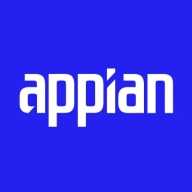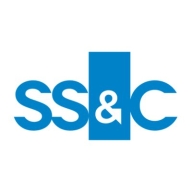

Appian and SS&C Blue Prism are two prominent competitors in business automation. Appian has an edge with its deployment flexibility and user support, while SS&C Blue Prism offers comprehensive automation capabilities justifying its higher cost.
Features: Appian provides a low-code platform appreciated for agility and integration with rapid application development and seamless system integration. SS&C Blue Prism specializes in advanced robotic process automation with strong capabilities in automating complex, rule-based processes, making it stand out for sophisticated automation.
Ease of Deployment and Customer Service: Appian adopts a cloud-first approach that simplifies deployment, paired with excellent support. SS&C Blue Prism has a more involved deployment due to its extensive automation features, but both offer strong customer service, with Appian allowing quicker setups.
Pricing and ROI: Appian generally has a lower initial setup cost and significant ROI through quick deployment and adaptability. SS&C Blue Prism, with higher setup costs, maximizes ROI over time through automation efficiencies, differentiating in the upfront cost and strategic value offered by core features.
| Product | Market Share (%) |
|---|---|
| Appian | 5.3% |
| SS&C Blue Prism | 0.6% |
| Other | 94.1% |


| Company Size | Count |
|---|---|
| Small Business | 20 |
| Midsize Enterprise | 9 |
| Large Enterprise | 41 |
Appian is a unified low-code platform and solution used by businesses to build enterprise applications and workflows. This product adapts to the needs of clients and the technologies they are already using to combine their data in a single workflow and maximize resources. The platform has four main components through which it transforms the work process for companies of various sizes. They are:
Appian is utilized across a diverse set of industries, including automotive and manufacturing, energy and utilities, education, financial services, telecom and media, transportation, retail, insurance, healthcare, and life sciences. The most frequent use cases of Appian are customer journey, governance, risk and compliance, operational efficiency, supply chain, distributed order management, and environmental, social, and governance (ESG) management.
Appian Features
Appian has various features that allow users to create solutions for their businesses. These features can be separated into a few groups according to function, including automation, low-code application development, and integrations and data. Some of the most frequently used features of Appian include:
Appian Benefits
The benefits of using Appian include:
Reviews from Real Users
A practice leader - digital process automation at a computer software company values Appian highly because the product is easy to develop, low-code, and has a good user interface.
Alan G., an advisory board member at Codecon VR, Appian offers a clear application life cycle, easy to learn documentation, and comes with a fundamentals course.
SS&C Blue Prism, renowned for its language capabilities and workflow design, supports detailed automation building, enhancing productivity. Despite some challenges like cost and limited integration, it offers substantial potential in automating diverse processes.
SS&C Blue Prism offers strong capabilities in document reading and a straightforward workflow design, making it accessible with basic BPM knowledge. Detailed automation design in the studio and effective monitoring in the control room are notable features. While facing higher costs and a steeper learning curve, it supports process mining and generative AI initiatives, crucial for industries aiming at transformation and activation services. Limited external system integration and lack of agile delivery encourage a strategic approach in its deployment.
What are the key features?SS&C Blue Prism finds its application across industries. In service industries, it automates repetitive tasks while supporting migration projects. Within the insurance sector, it helps automate claims handling and pricing by integrating data efficiently. Companies use it when transitioning processes, such as upgrading systems from older versions to new applications.
We monitor all Business Process Management (BPM) reviews to prevent fraudulent reviews and keep review quality high. We do not post reviews by company employees or direct competitors. We validate each review for authenticity via cross-reference with LinkedIn, and personal follow-up with the reviewer when necessary.